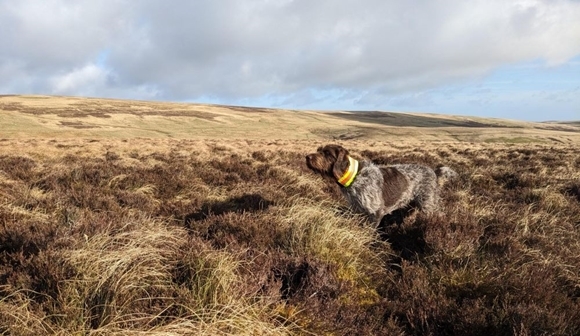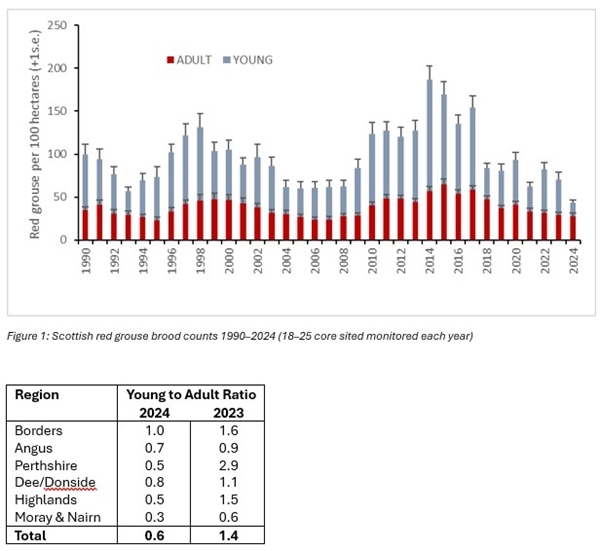
By Felix Meister, DPhil, MSt, BA, Advisor, GWCT Scotland
In July, GWCT staff and their pointing dogs revisited study sites across Scotland to count red grouse. After the pair counts in the spring, which aim to determine the number of breeding pairs, these brood counts in July determine the number of grouse chicks that survived to fledging age.
The current monitoring regime extends over 24 sites located in the Scottish Borders, Angus, Perthshire, Dee/Donside, Highlands and Moray & Nairn. As many of the study sites have been monitored consistently and continuously since the 1980s, this GWCT dataset is one of a kind and offers crucial insights into red grouse population dynamics.
The results of this year’s brood counts point to a very poor breeding season for red grouse in Scotland (Fig. 1). A total of 891 birds were counted, of which 570 were identified as adults (males and females) and 321 as young. Whereas the number of adults is roughly similar to that counted in 2023 (n = 614), that of young birds was considerably lower than in 2023 (n = 890).
Hence, the ratio of young birds to adult birds was 0.6 this year compared to 1.4 in 2023 (table 1). The majority (80%) of all sites counted in 2024 had fewer young than adult birds. Of the young birds seen, many were so small that they were likely to be second broods, suggesting that the first broods had been lost at some point.

The reason for such pervasive chick loss is likely to be a combination of factors. Bad weather may have played a role, since monthly precipitation data collected by the Met Office suggests that rainfall in Scotland in May was substantially higher this year than in other years. Increasing tick numbers observed across Scotland (see here) could also mean that grouse chicks were less resilient to the effects of weather.
Moreover, in many of the areas surveyed, the tick-borne Louping Ill Virus has previously been recorded, which is associated with high chick mortality in red grouse. Other diseases and parasites, including strongyle worms, may have contributed as well. More research is urgently needed to better understand what factors are driving current declines.
Thorough disease monitoring in the autumn might help identify some of these factors and allow for management strategies to be adjusted accordingly. GWCT Uplands Advisory Services are available for taking blood samples for LIV testing and for analysing grouse guts for the presence of strongyle worms. We are also able to carry out grouse counts out with the long-term monitoring project. All inquiries should be directed to scottishadvisory@gwct.org.uk.